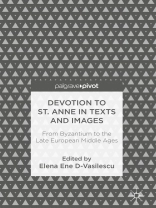St. Anne was popular with representatives of various segments of society – from monks, nuns, members of the clergy, royal patrons, to church-goers of every rank. This book looks into both the public and private worship of this holy woman and brings to the surface some under-exposed aspects of it. It does so through the examination of manuscripts, monumental art, relics, sculpture, and texts of various genres. The contributors employ a historical as well as a theological perspective on how the cult of St. Anne (sometimes also with glimpses concerning that of Joachim) established itself, referring to areas in Europe which are not frequently discussed in English-language scholarship. This new contribution to the field of hagiography will be of interest to academics from a variety of research fields, including theologians, Byzantinists, art and church historians, and historians of a larger scope.
Inhoudsopgave
Chapter 1: The lives of Joachim and Anna depicted in the Church of Humor Monastery, Moldavia (Romania); Adriana Balaban Bara.- Chapter 2: The pleasure of child nursing: St. Anna and the infant Mary in texts and Byzantine art; Elena Ene D-Vasilescu.- Chapter 3: The reception of Saint Anne’s cult in Hungarian ecclesiastical environment: her legend in codices; Emoke Nagy.- Chapter 4: The Education of the Virgin: an alternative suggestion concerning its origins; Virginia Nixon.
Over de auteur
Elena Ene D-Vasilescu is a Research Fellow and Tutor at the University of Oxford, UK. She does research and teaches in Patristics and Byzantine Studies. Her recent publications include, co-edited with Mark Edwards, Visions of God and ideas on deification in Patristics thought (2016), and the articles “Generation (γενεά) in Gregory Nazianzen’s poem On the Son” (2017); “Early Christianity about the notion of time and the redemption of the world” (2017), and “Late Developments in Meta-Byzantine Icon-Painting” (2017).












